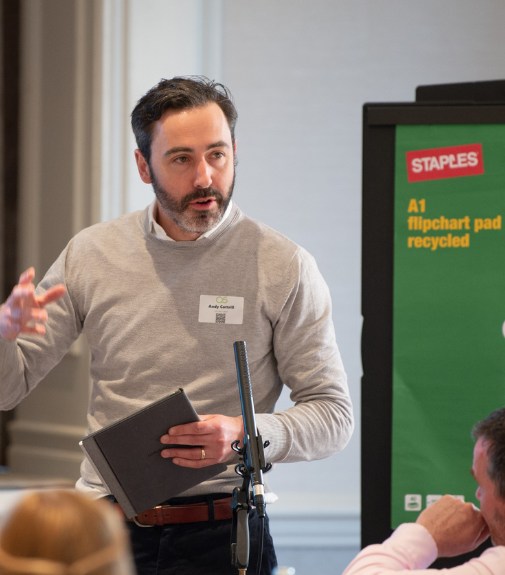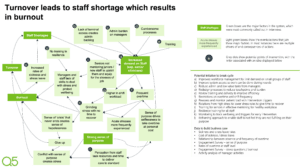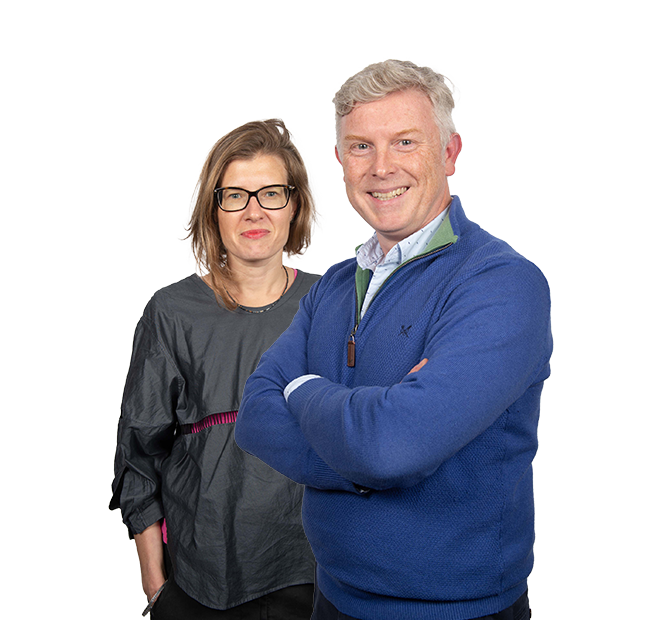
‘I was expecting you to tell us they needed yoga lessons and more yoghurt…’ said one previously apprehensive exec as she left the workshop (you can find the rest of the quote later on).
We run into that a lot when talking about employee experience.
There’s a shared belief that, whether it’s said explicitly or not, that the experience and/or wellbeing of employees can be improved by taking one of two approaches:
The age-old response of handing out pay rises and bonuses to hopefully numb the pain. Now I’m not going to sit here and tell you that employees don’t like a pay rise, and beyond increased spending power, wages also act as a great conduit to show how much you value your employees. Plus, external pressures like the cost of living have a real impact on how employees turn up, so alleviating those pressures definitely helps. However, money is only part of the equation of why your people give up their most valuable resource (their time and labour). Yes, your employees might be richer, but a lot of the issues that made them unhappy in the first place still exist.
A relative newcomer onto the scene, also referred to as ‘the fluffy stuff’, these are things companies offer employees to make work a bit more bearable, a sugar hit (sometimes quite literally) that may lead to a few slightly more happier employees in the short run, with little discernible impact on the broader experience. These give-aways tend to be prefaced with the phrase ‘We heard you, and here’s what we’re doing about it’. Good to show you’re doing something, bad for doing something meaningful.
Both these ways of improving employee experience come with a nagging sense of dissatisfaction for people leaders. The ‘fix’ that doesn’t quite hit the mark. The problem that remains fundamentally unsolved. The distraction of busyness that masks the underlying issues. They all seem to be scratching the surface or providing a salve for a symptom, without addressing the root cause.
The good news is that there is a third approach to deliver meaningful change. The challenge is that this is the way that requires the most work.
Leaders know instinctively that it’s the people stuff that matters most. But here’s the catch. People are messy. We are driven by emotion and the context we live in. That makes understanding people hard, complicated work, as we need to find out what they want so we can translate that into services that make them happy and productive. That process isn’t easy and takes time that managers don’t often have. But it is vital and can be the difference between a collective shrug of the shoulders vs. an energised, engaged workforce that delivers over and above expectations.
When we at Q5 are asked by our clients to help improve their employee experience, we follow a 4-step approach of (1) Listen, (2) Translate, (3) Speak and (4) Do. To explain these in a bit more detail and given that we as humans learn through stories, let’s tell one about a recent experience we had, an Australian health district – and the origin of that quote at the top.
The health district knew their people were worn out and fed up, as the pressures of frontline work accentuated by COVID-19 continued to mount with little hope of respite. So, they approached Q5 with the ask to truly understand the challenges that their people faced and help them design solutions that could turn the dial and make work a better place for their people.
We went out to meet staff at all levels, travelling to get to their site and sitting down with them to ask them about their day-to-day experience. Yes, we were looking for challenges they faced, but we also captured what were those bright spots of hope that we could share and scale to build a better future. When we do this work, the people we interview feel deeply respected and valued – they’ve quite simply never had anyone come and talk to them and show them that their experience mattered.
The challenges and problems that are raised, very rarely fit into neat, tidy boxes. If you try and break them down and split them apart, you run the risk of decontextualising people’s stories, losing their meaning (and value!) in the process. To avoid that, we take a systems view, being attentive to the patterns that we see across the ecosystem to help us derive our understanding and turn it into something that we can action. With the health district we used systems maps and employee lifecycle maps to show the complexity of the challenge as well as showing where the tangible interventions are to make the biggest change. Here’s an example of a systems map we created:

It’s now the responsibility of the leaders to hear what’s been said, and work with their people to set the vision and decide how we are going to get there. We need to move away from the belief that our employees are merely a provider of information (in a consultative process), and towards an inclusive relationship that values their input to codesign the path forward. This means bringing employees from different levels into the room (both literally and metaphorically) to shape the strategy.
At the health district, we shared with leaders their people’s current experience through the stories we heard and the patterns we saw – given the geographical and time constraints on staff we ran the sessions virtually. Ideally, we would run the sessions with people physically in the room. We then worked with leaders and a select group of those interviewees to get to the answers of what we want our employee experience to be in the future and how are we going to get there? It was in this stage where our beloved yoga and yoghurt quote came from, so here’s the quote in full:
‘I was expecting you to tell us they needed yoga lessons and more yoghurt, but you’ve actually found the root cause’
Visions and roadmaps mean nothing if action isn’t attached. Start small and pilot the new ways of working, adapted processes, enhanced training or whatever else has been decided, improving as you go and measuring the impact so that it’s ready to scale.
The push back you’ll get is that ‘we haven’t got time for this type of stuff’, especially if employees are feeling overworked and burnt out. We tackled this at the health district by conducting an ‘activity analysis’ (a process of role redesign to free up time) with managers across a few small healthcare facilities who had the most acute need. This pilot brought quick demonstrable results and built momentum, giving managers greater capacity to do what they do best, manage their people.
It’s a process that’s tough, that’s tiring and can be emotionally draining. But when it works, it will be some of the most rewarding work you will ever do.
